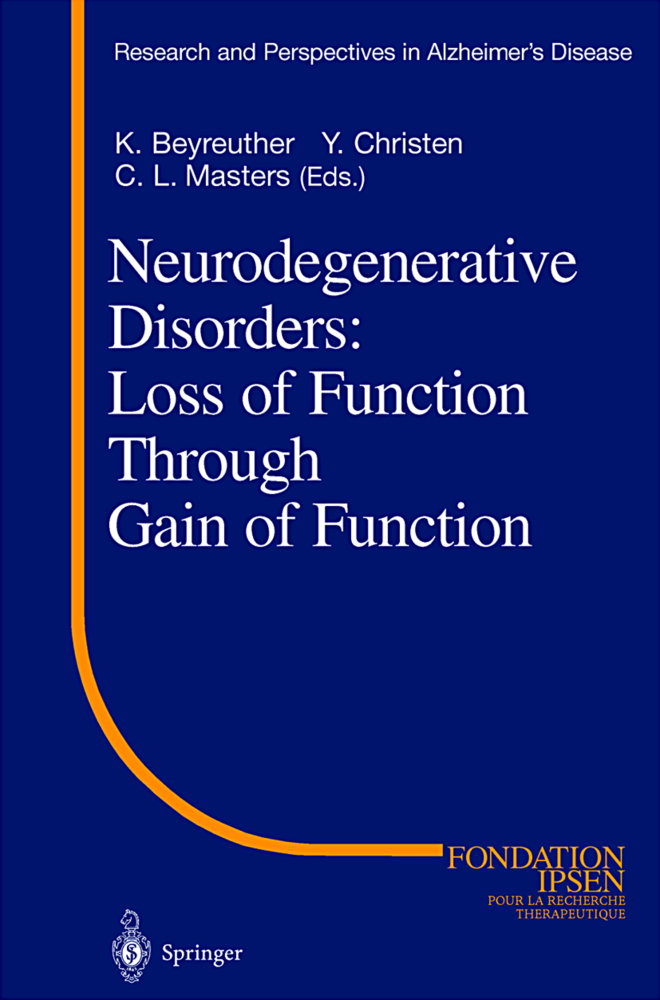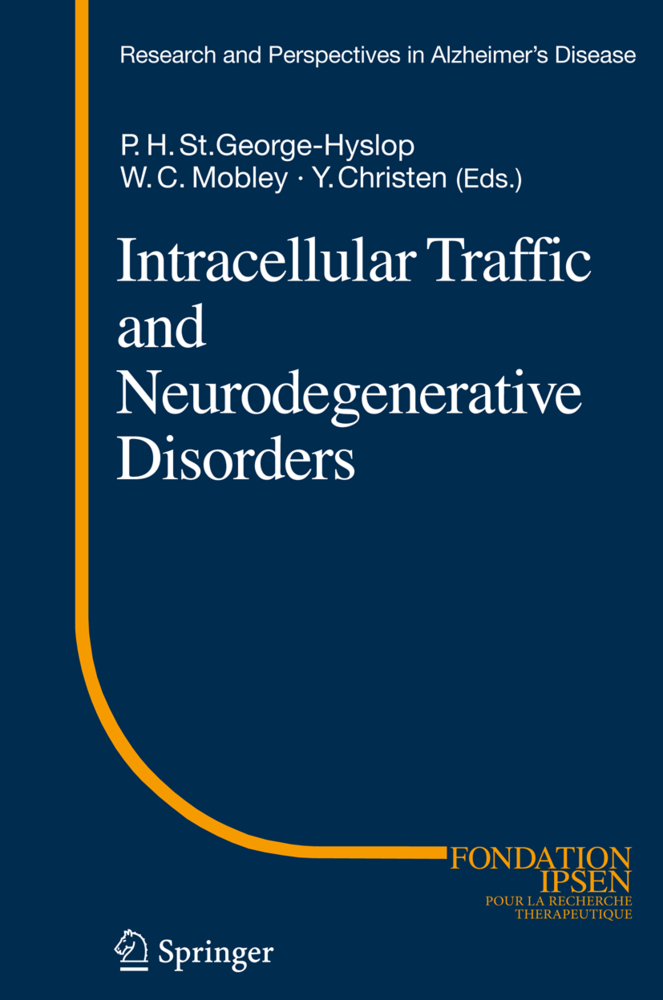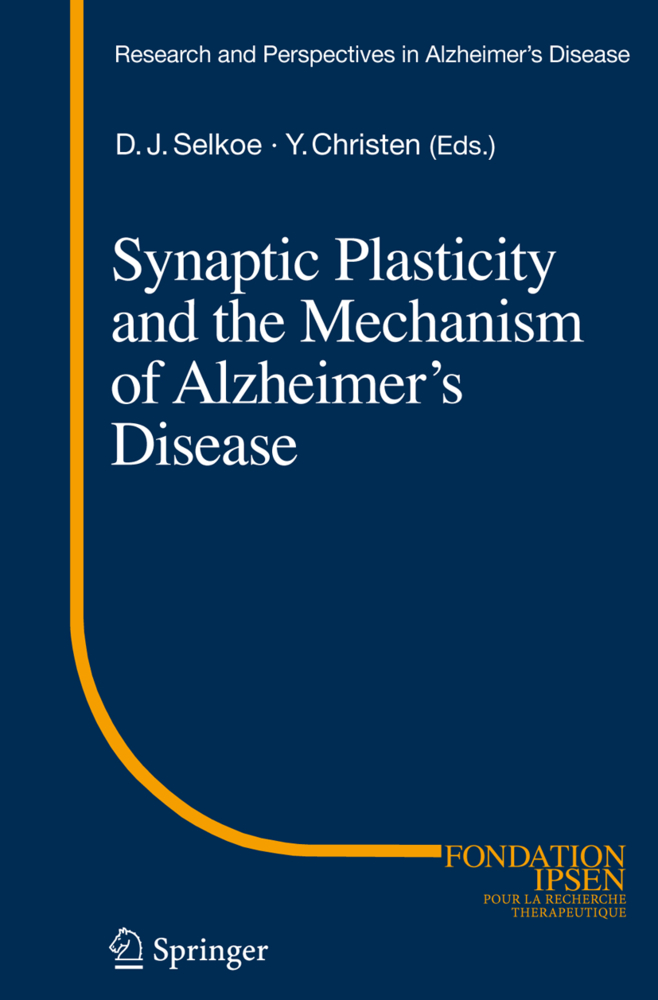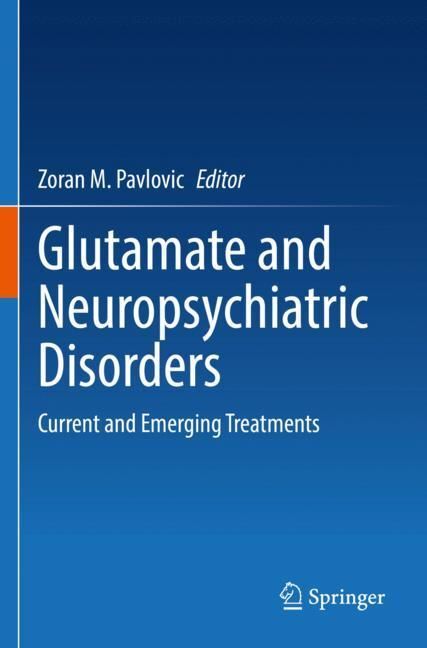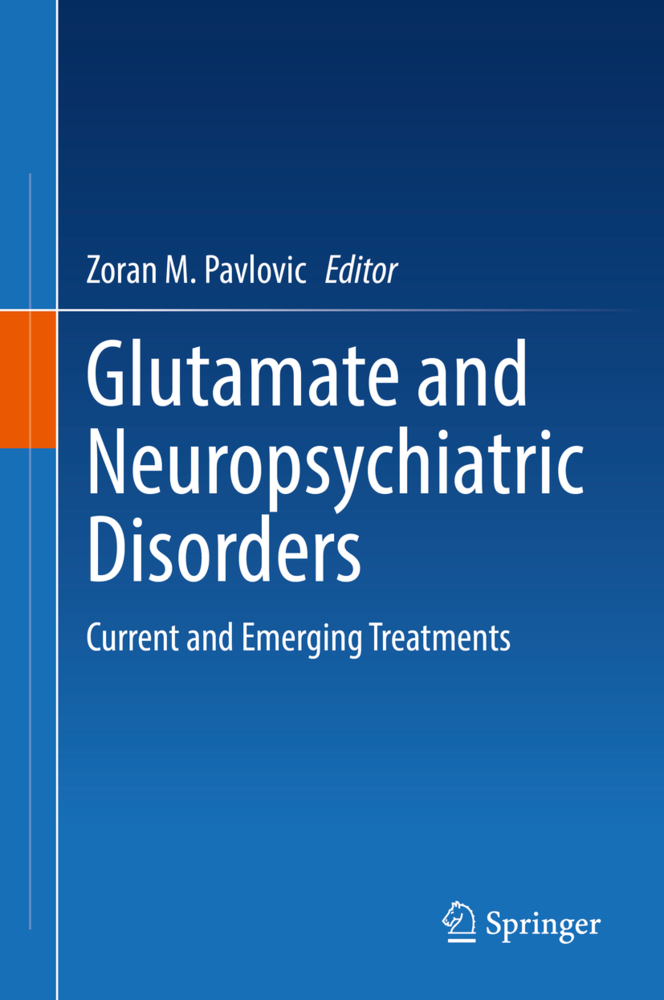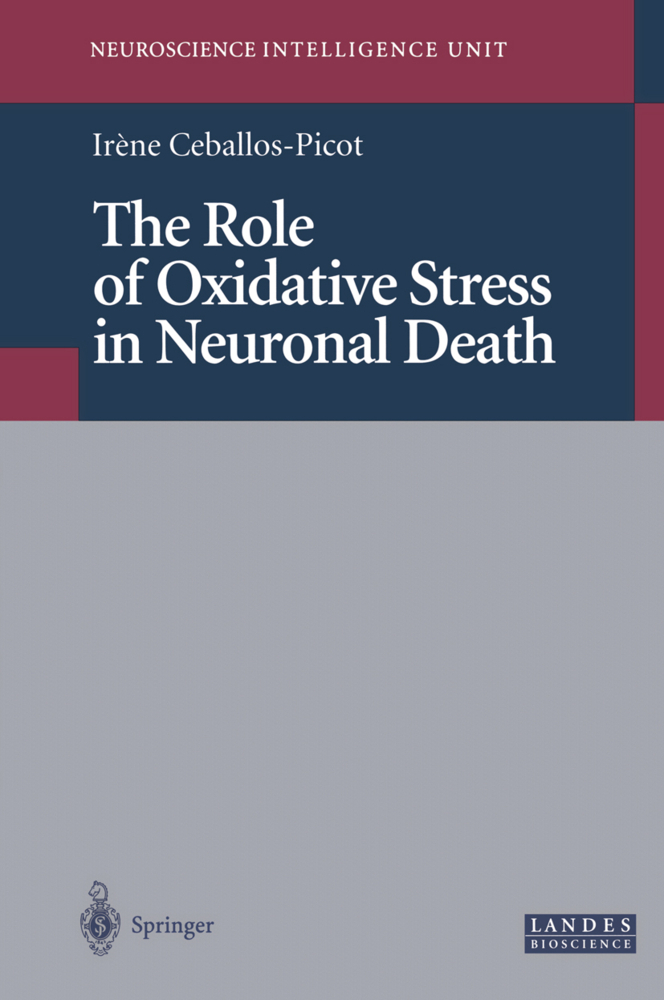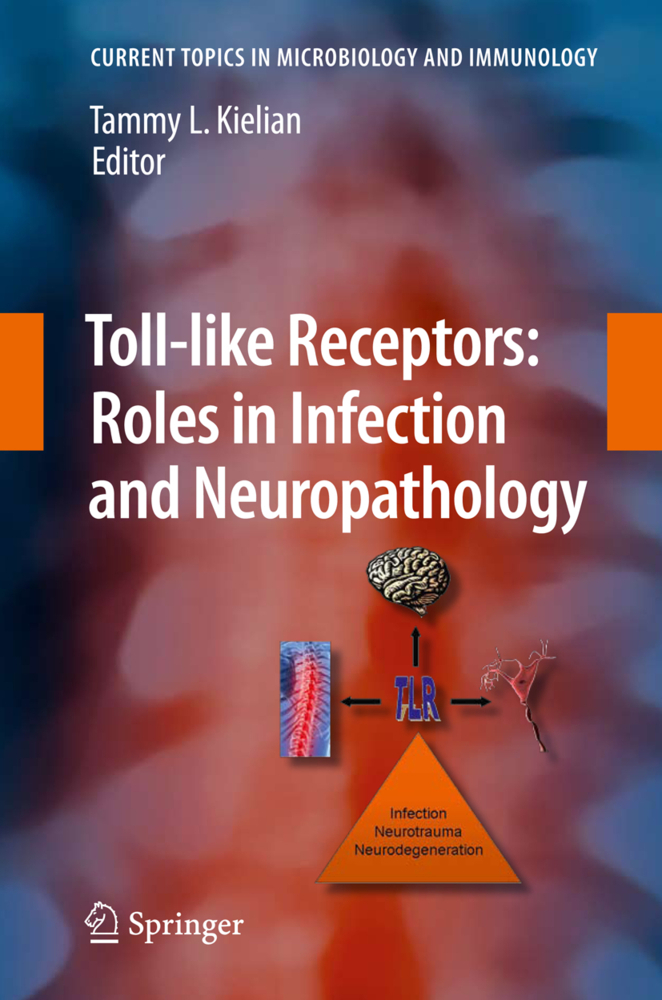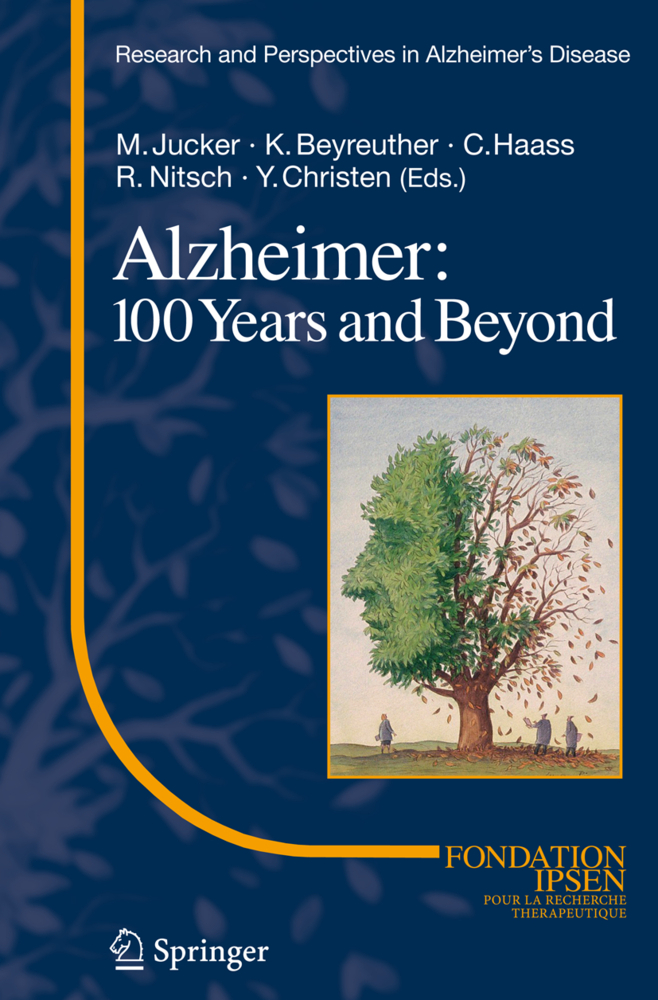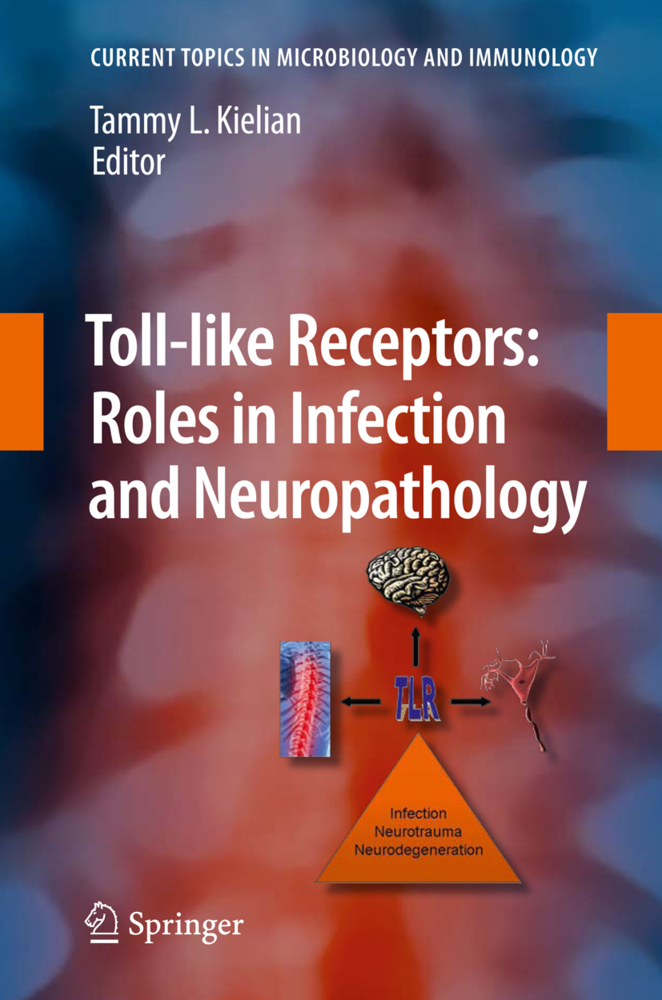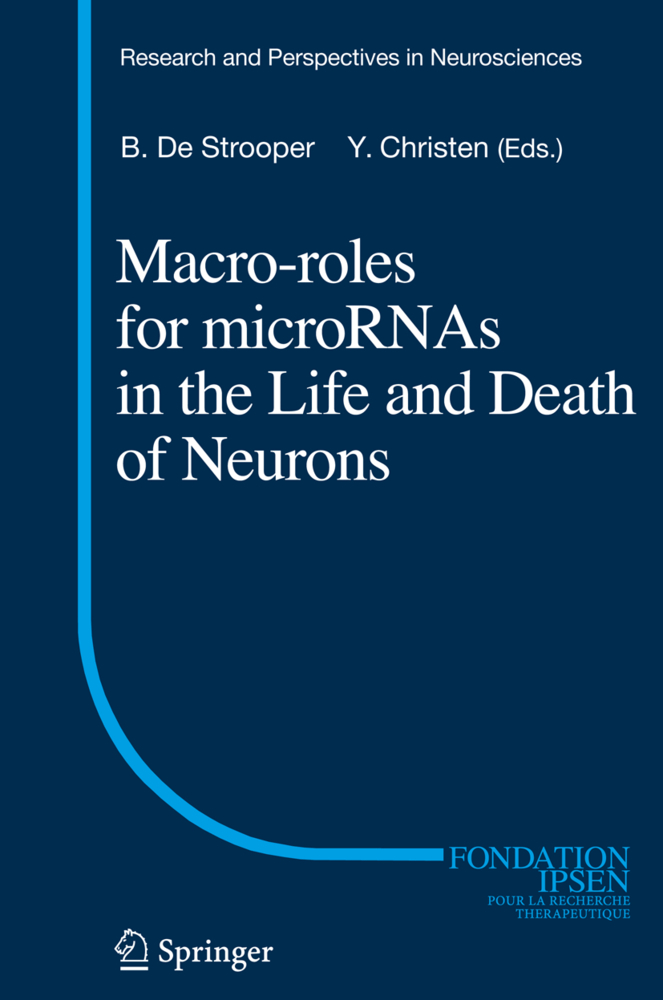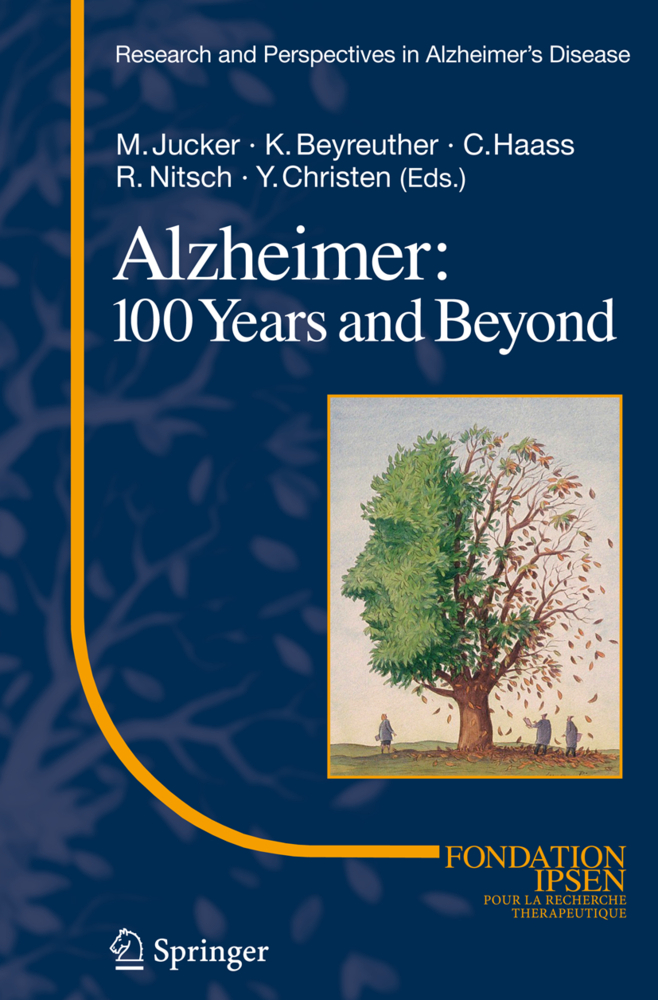Neurodegenerative Disorders: Loss of Function Through Gain of Function
Neurodegenerative Disorders: Loss of Function Through Gain of Function
Fondation Ipsen sponsored a meeting in Paris in February 2000 on the emerging paradigm-shift in our understanding of the major degenerative diseases which affect the aging human brain. This book sumarizes our deliberations on some of these major neurodegenerative diseases that are characterized by protein depos its, and that are due to the pathogenic gain of function of an otherwise normal neuronal protein. For each of the major human neurodegenerative diseases covered in this book -the most prominent being Alzheimer's disease -experimental models are described, including cell culture systems and animal models which range from the round worm, Caenorhabditis elegans, the fruitfly, Drosophila melanogaster, to rodents. Remarkably, in the sporadic forms of these human diseases, only a minor change in the level of production or turn-over of the relevant proteins is sufficient to cause disease in late adult-hood. Neurodegeneration in Alzheimer's disease, for example, usually results in symptoms and signs in the seventh to eighth decades. In contrast, the development of protein deposits in transgenic mice over-expressing the corresponding disease gene parallels the genetic forms of the human diseases in regard to its manifestation occuring half-way through its normal life-span, i. e. about 50 years in humans (the so-called "presenium") and 9 to 12 months in the mouse. Nevertheless, these models have served to elu cidate many of the pathways underlying the human disease processes, for instance clarifying the neuronal origin of parenchymal and perivascular amyloid in Alzheimer's disease and Creutzfeldt-Jakob disease.
Pathological Mechanisms in Huntington's Disease and Other Polyglutamine Expansion Diseases
Prion Protein Biogenesis: Implications for Neurodegeneration
The Value of Transgenic Models for the Study of Neurodegenerative Diseases
Pathogenesis and Mechanism of Cerebral Amyloidosis in APP Transgenic Mice
Alzheimer's Disease: Physiological and Pathogenetic Role of the Amyloid Precursor Protein (APP), its A?-Amyloid Domain and Free A?-Amyloid Peptide
The NEXT Step in Notch Processing and its Relevance to Amyloid Precursor Protein
The Putative Role of Presenilins in the Transmembrane Domain Cleavage of Amyloid Precursor Protein and Other Integral Membrane Proteins
ApoE Receptors in the Brain: Novel Signaling Pathways with Potential Relevance for Alzheimer's Disease
Homeoprotein Intercellular Transport: Mechanisms, Significance and Applications
Overexpression of APPL, a Drosophila APP Homologue, Compromises Microtubule Associated Axonal Transport and Promote Synapse Formation
A Gain of Function of the Huntington's Disease and Amyotrophic Lateral Sclerosis - Associated Genetic Mutations May Be a Loss of Bioenergetics.
The Natural History of Alzheimer's Disease: Minding the Gaps in Understanding the Mechanisms of Neurodegeneration
Mechanisms of Motor Neuron Death in ALSPathological Mechanisms in Huntington's Disease and Other Polyglutamine Expansion Diseases
Prion Protein Biogenesis: Implications for Neurodegeneration
The Value of Transgenic Models for the Study of Neurodegenerative Diseases
Pathogenesis and Mechanism of Cerebral Amyloidosis in APP Transgenic Mice
Alzheimer's Disease: Physiological and Pathogenetic Role of the Amyloid Precursor Protein (APP), its A?-Amyloid Domain and Free A?-Amyloid Peptide
The NEXT Step in Notch Processing and its Relevance to Amyloid Precursor Protein
The Putative Role of Presenilins in the Transmembrane Domain Cleavage of Amyloid Precursor Protein and Other Integral Membrane Proteins
ApoE Receptors in the Brain: Novel Signaling Pathways with Potential Relevance for Alzheimer's Disease
Homeoprotein Intercellular Transport: Mechanisms, Significance and Applications
Overexpression of APPL, a Drosophila APP Homologue, Compromises Microtubule Associated Axonal Transport and Promote Synapse Formation
A Gain of Function of the Huntington's Disease and Amyotrophic Lateral Sclerosis - Associated Genetic Mutations May Be a Loss of Bioenergetics.
Beyreuther, K.
Christen, Y.
Masters, C. L.
| ISBN | 9783540412182 |
|---|---|
| Artikelnummer | 9783540412182 |
| Medientyp | Buch |
| Copyrightjahr | 2008 |
| Verlag | Springer, Berlin |
| Umfang | 189 Seiten |
| Abbildungen | XIV, 189 p. 29 illus., 8 illus. in color. |
| Sprache | Englisch |

